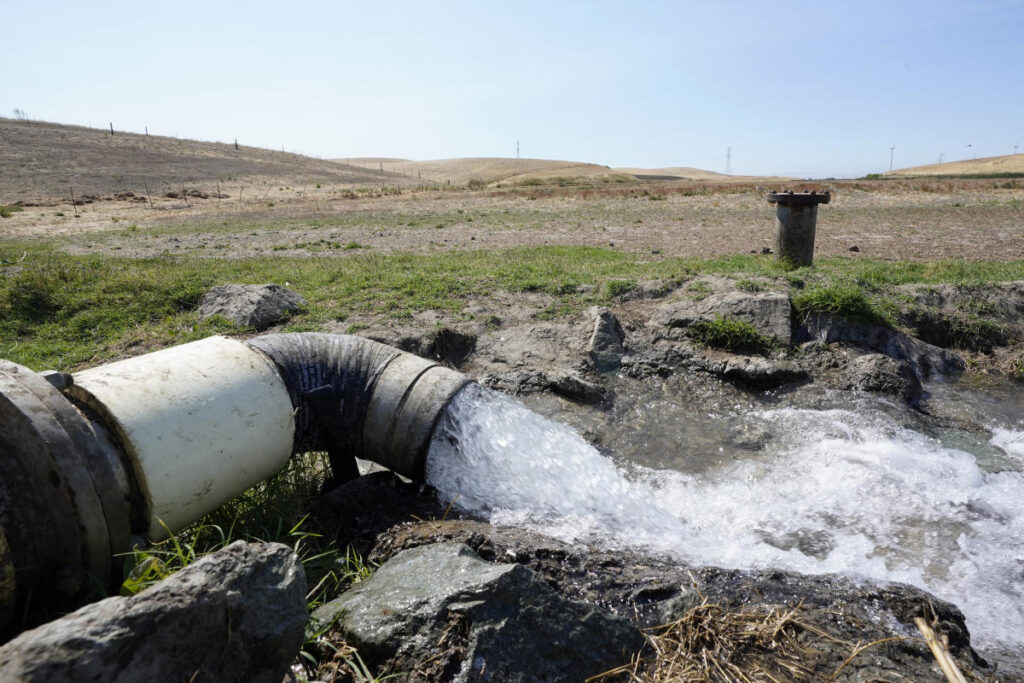Since Donald Trump’s election, immigration, border security, and government efficiency have been prominent topics in his discourse. However, in California’s agricultural heartland, his remarks about water allocation have garnered significant attention. As the state produces approximately 75% of the nation’s fruits and nuts and over a third of its vegetables, access to water is crucial. This access is facilitated by an intricate system of dams and canals that serve the Central Valley, which has historically depended on consistent water supplies from these federal and state-managed systems. However, recent environmental regulations have led to restrictions on water availability for farmers, which has prompted concerns about future water supplies and agricultural sustainability as they confront challenges stemming from both drought and overuse.
Farmers are looking to the coming Trump administration for increased stability in water distribution from the Central Valley Project, a key source for over 5 million acre-feet of water for agricultural purposes each year. In a recent social media post, Trump criticized the environmental management of California’s water resources, specifically the diversion of large volumes into the Pacific Ocean instead of being directed towards agricultural use. Jason Phillips, executive of the Friant Water Authority, emphasized the centrality of water to farming, indicating that without it, the fundamental components of food production become irrelevant. This perspective highlights the urgent demand for more accessible water sources, particularly as stakeholders navigate ongoing environmental concerns and the need for reliable agricultural input.
Under the previous Trump administration, federal government actions resulted in increased water flows to Californian farms, a move faced with backlash from environmental advocates. In contrast, the Biden administration has sought to reverse these decisions by implementing new regulations designed to balance agricultural interests with environmental protection measures aimed at safeguarding endangered species, including the delta smelt and Chinook salmon. The evolving policies reflect the tension between agricultural demands and the necessity of preserving California’s aquatic ecosystems, a situation exacerbated by climatic variability and historical drought conditions that drastically affect water availability.
As California farmers lament limitations in federal water allocations, particularly in light of recent rainfall that has filled reservoirs, there is a heightened sense of urgency to address the future of water supply amidst ongoing climate challenges. Environmental groups, fishermen, and farmers contend that the impending crisis necessitates a coherent strategy focused on water sustainability and ecosystem restoration. The struggle for water rights and allocations has led to conflicting claims and a maze of regulations involving multiple stakeholders who each advocate for their priorities. As competing demands rise, possible solutions include a range of approaches, from enhanced conservation efforts to infrastructural upgrades and better water management practices.
Governor Gavin Newsom, critical of Trump’s administration, has rallied for protective measures to ensure California’s progressive environmental policies remain intact. Despite legal battles over water flow regulations during Trump’s time in office, advocates argue that Newsom has not undertaken sufficient action to bolster environmental conditions in the delta region. This complicated political and environmental landscape showcases the tensions at play, with varying opinions on the best course for ensuring water availability while protecting ecosystems. Many hope that state and federal collaborations can yield a more harmonious approach to water management, incorporating diverse stakeholder input to forge viable, long-term solutions.
Amid these discussions, farmers like Daniel Errotabere, who has experienced the challenges of water uncertainty firsthand, continue to advocate for a more predictable and stable agricultural water supply. With limits on groundwater usage, surface water availability is becoming even more crucial for maintaining California’s agricultural output. Farmers consistently face the unsettling reality of fallow fields due to water rationing, emphasizing the need for improved resource management that resembles the reliability seen in electricity distribution. As the Trump administration prepares to take office again, California’s agricultural community cautiously anticipates the potential for a lasting and equitable resolution to the state’s water crisis, which remains pivotal for both farmers trying to sustain production and for broader environmental health.

